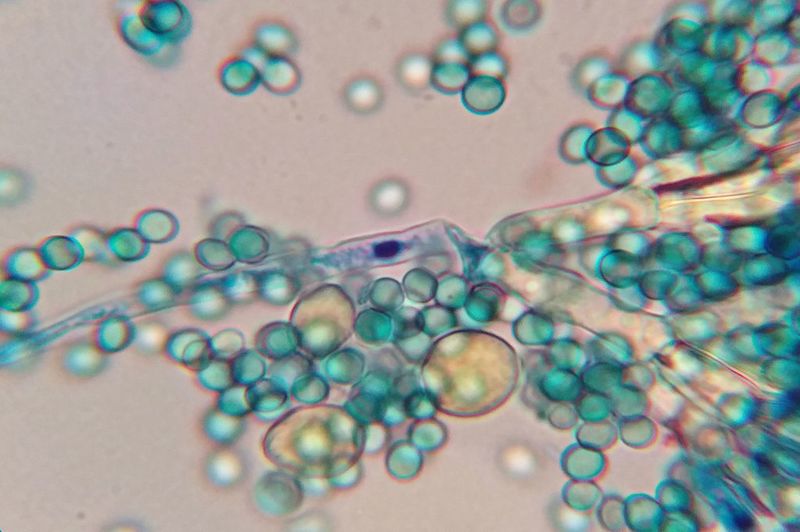If you have recently commissioned a mold inspection in your house, you might be asking “what is a high mold spore count.” A count of more than 10,000 spores is the lower limit to categorize an area with a high degree of mold concentration.
Unlike mold colonies, spores and toxins are much resistant to routine cleaning procedures. Therefore, refrain from DIY cleaning and use professional help instead.

In this article, we will categorize the levels of mold infestation in an area. The categories depend on the total mold count counted after inspection and testing.
Levels Of Mold Infestation
1. Extremely clean
At 0-50 spores, this trace level of mold count is not an issue. However, some genus such as Stachybotrys and Memnoniella are considered elevated starting at this level.
2. Low level
This category is still extremely clean, and the spore count is between 51 and 500 spores.
3. Acceptably clean
This category has a low level of mold spore concentration at 501-1500 spores. It can be lowered down by standard cleaning and wiping.
Spore concentrations of Penicillium, Aspergillus, and Cladosporium can be found at this level.
4. Slightly elevated level
A spore concentration of 1501-3000 spores may indicate that an indoor reservoir may be present. The result must be compared with an outdoor reading to determine if cross-contamination is happening.
To confirm if there is an active fungal growth nearby, a hyphal fragment concentration of more than 100 counts per cubic meter must be obtained. The lack of upkeep and dusting causes these levels.
Regular cleaning and wiping would reduce the concentration.
5. Moderate level
A corresponding outdoor count to the indoor concentration of 3001-4500 spores will require some form of vigorous clean-up. You may also increase the ventilation to reduce the spore count.
Cleaning of an area where there is visual mold contamination is required. If there is none, a hyphal fragment concentration of more than 100 spores per cubic meter indicates a nearby active fungal growth.
This level of contamination is caused by an extreme lack of upkeep and a dusty home. If the area is clean, there might be some hidden mold growth.
These hidden fungal growths can be located through mold mapping. Severely sensitive people may experience some discomfort when exposed to these levels for a prolonged period.
6. Moderate to high level
The level where some clean-up is typically necessary. The spore count is between 4501-10000 spores.
Cleaning and confirmation of active fungal growth are similar to the previous category. The causes of the high mold count are also the same, with the addition of lack of ventilation and relative humidity of more than 60%.
Fungal fogging can help reduce the mold level. Even some people with a normal immune system might feel some symptoms due to prolonged exposure.
7. High level
The hyphal fragment concentration in this category is above 100 per cubic meter. The spore count lies 10001-25000 spores may grow into >10sf or larger.
Cleaning is a must if there is visual mold contamination. If none, a hidden fungal growth is present.
The relative humidity is most likely above 60%. Some form of access restrictions to the affected areas might be necessary, as most people with a normal immune function will experience symptoms with prolonged exposure.
8. Very high level
A professional mold remediator is most likely necessary at this level of contamination. The spore count is 25001-75000 spores, and their size is usually more than 100sf.
The relative humidity is elevated above 60%, and the hyphal fragment concentration is more than 100 per cubic meter. Restrictions to the affected area may be implemented.
Almost all people with normal immune systems will suffer from symptoms due to prolonged exposure.
9. Extremely high level
A professional mold mediator is necessary at this level. The spore count is 75000-1000000 and may grow to more than 100sf.
The hyphal fragment concentration will be highly elevated, and the relative humidity will be above 60%. The affected area must be vacated, as this level is considered hazardous to human health.
If you need further help on how to read mold test results, you may check some articles online. Also, there is this easy guide on how to get rid of molds in the air that you may want to read.
What are the dangers of having a high mold count?
In the previous section, we keep on saying that people may experience some symptoms due to prolonged exposure to various levels of mold spores. What are those symptoms?
Here is a list of the allergic reactions that humans may experience from prolonged exposure to molds:
- Watery eyes
- Runny nose
- Itching
- Sneezing
- Coughing
- Wheezing
- Difficulty breathing
- Headache
- Fatigue
The above symptoms are mild. Once a person is exposed to mycotoxins (toxins produced by fungi), the consequences are worse.
Immunocompromised individuals are at a higher risk of developing symptoms when exposed to a high level of molds. The same is true for children, elderlies, and infants.
Take note that foods such as nuts may also carry mold colonies. These can be fatal, so take extra precautions with your food intake.
Conclusion
Hopefully, we answered your question on “what is a high mold spore count.” Whenever members of the household are experiencing the above symptoms or there is a visual manifestation of mold infestation, call immediately for professional assistance.
